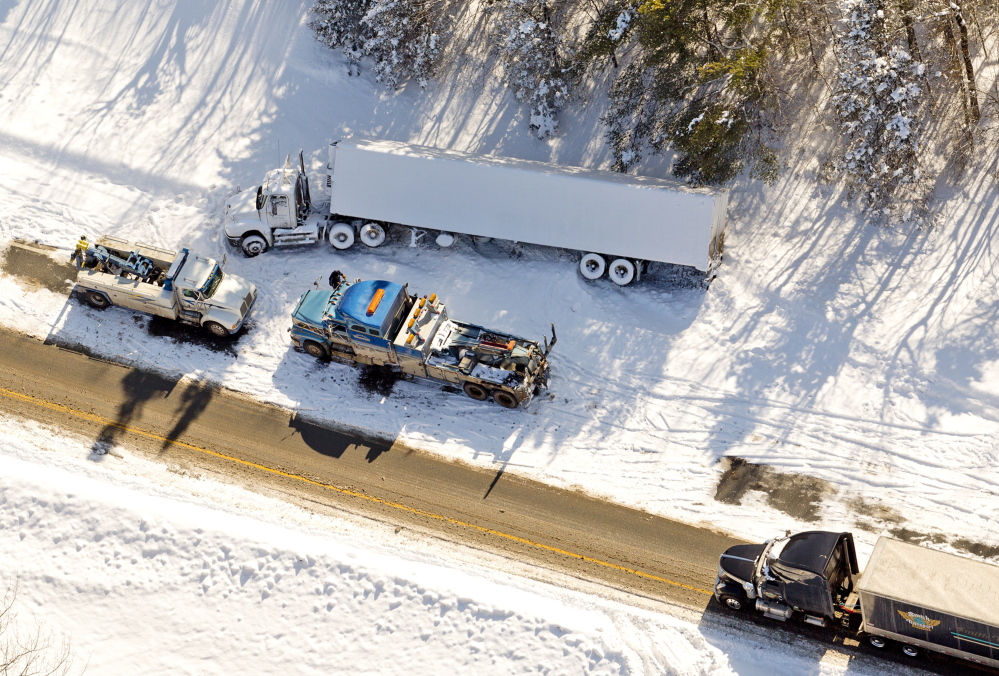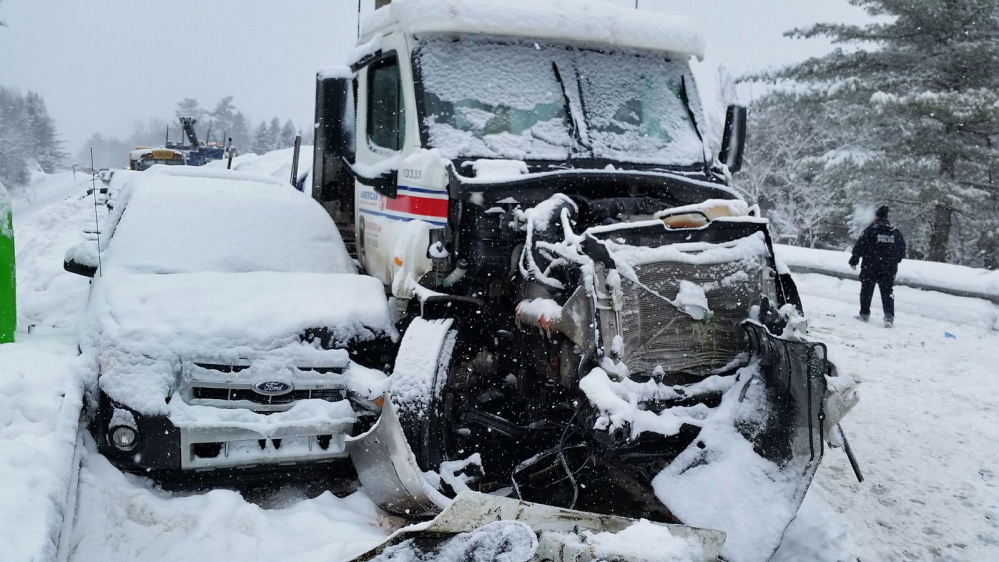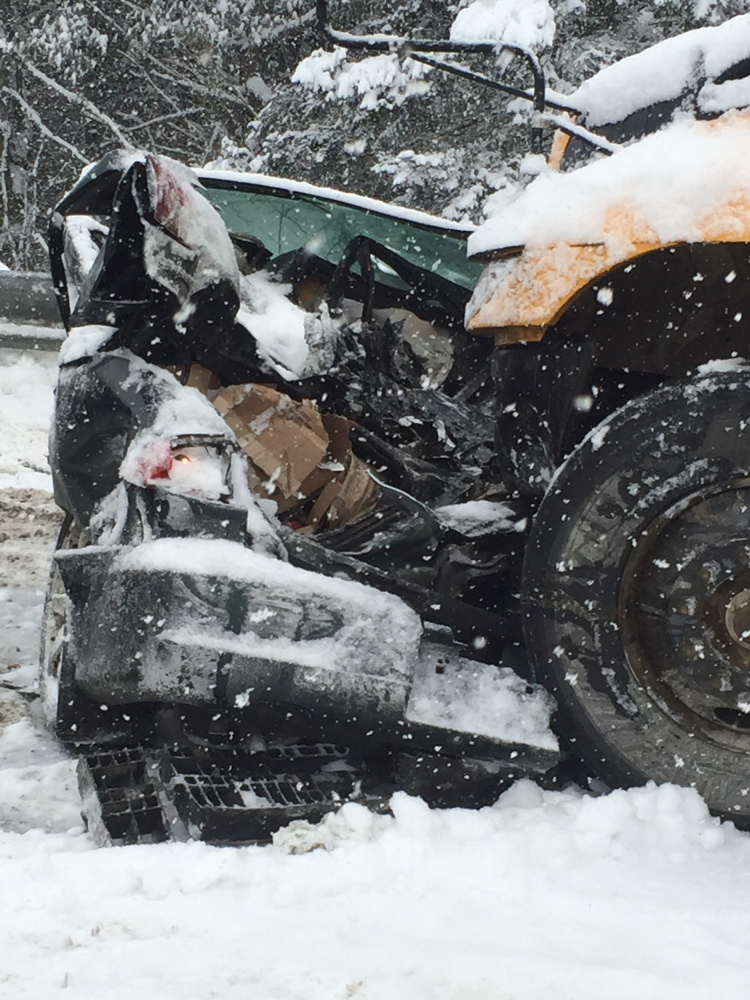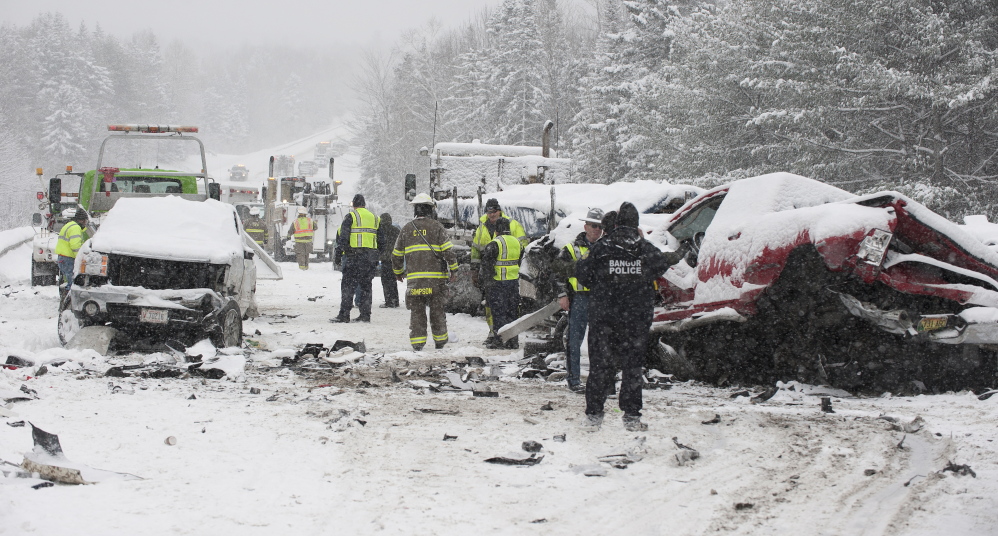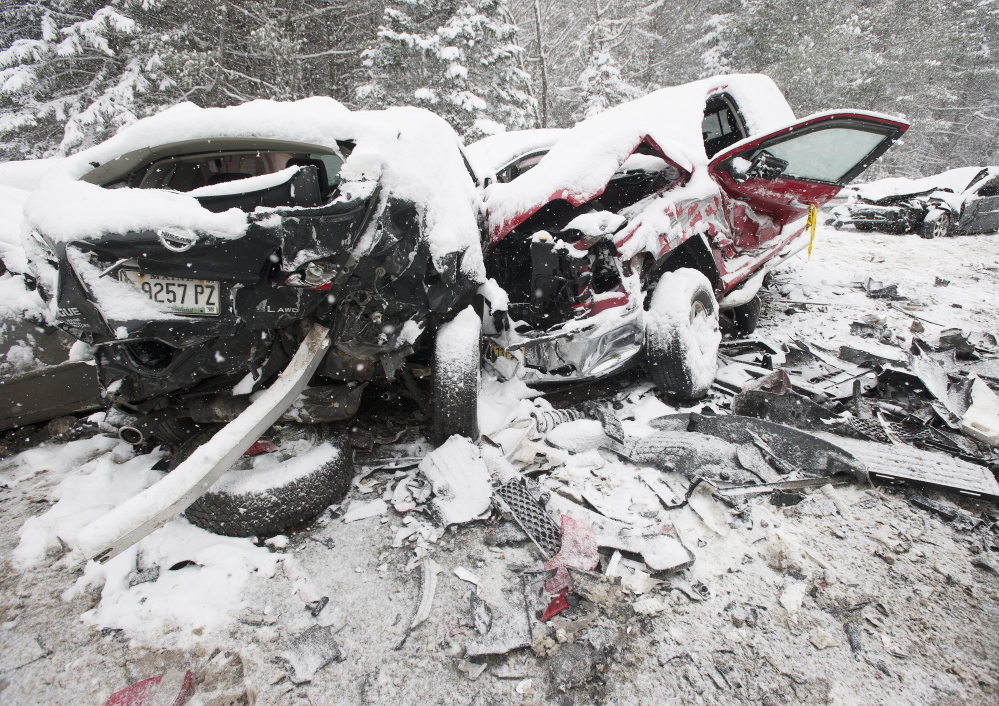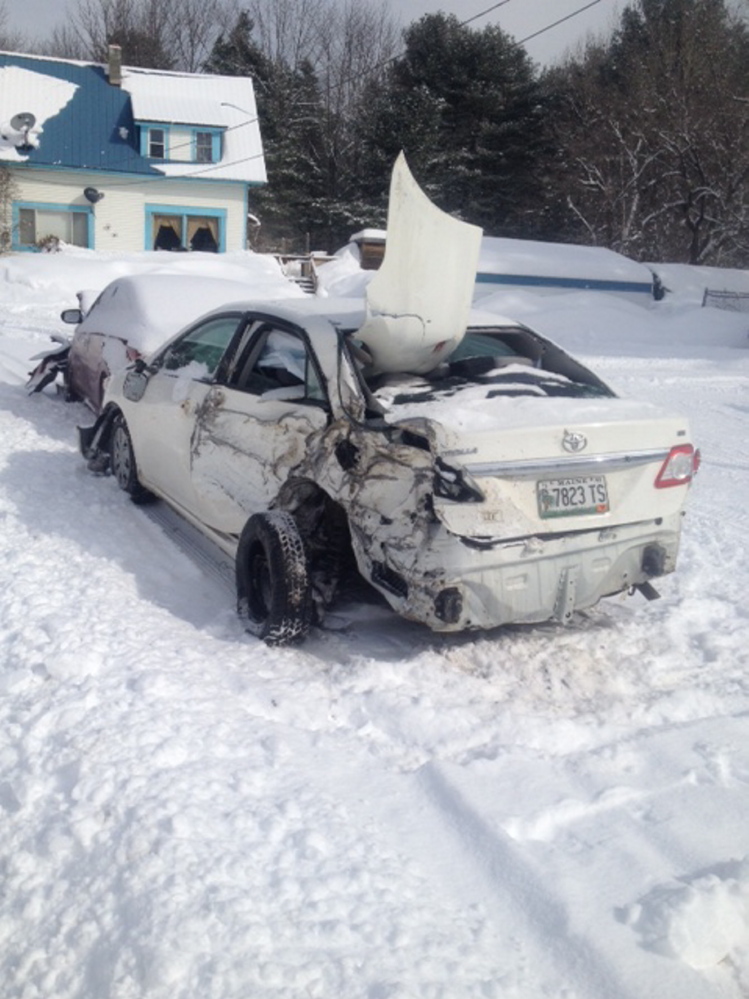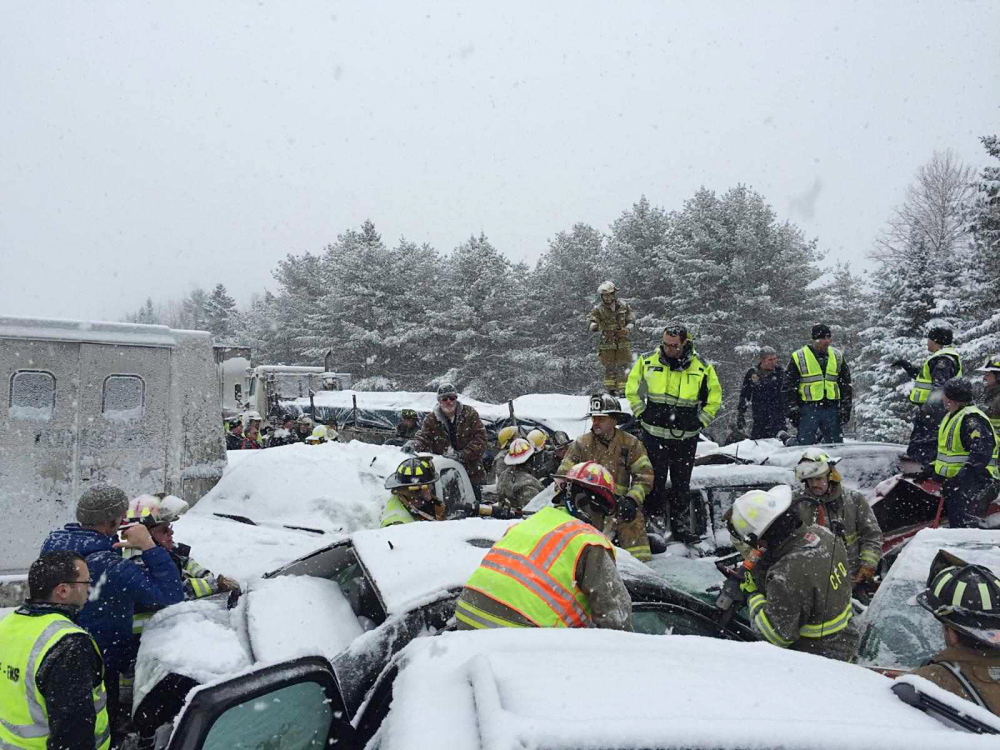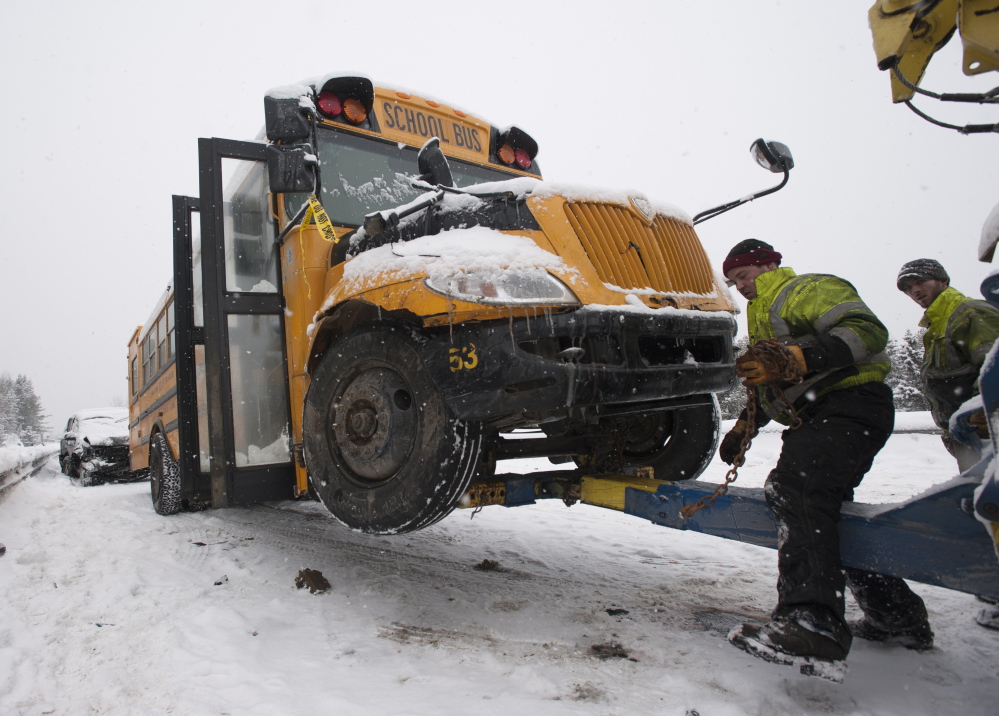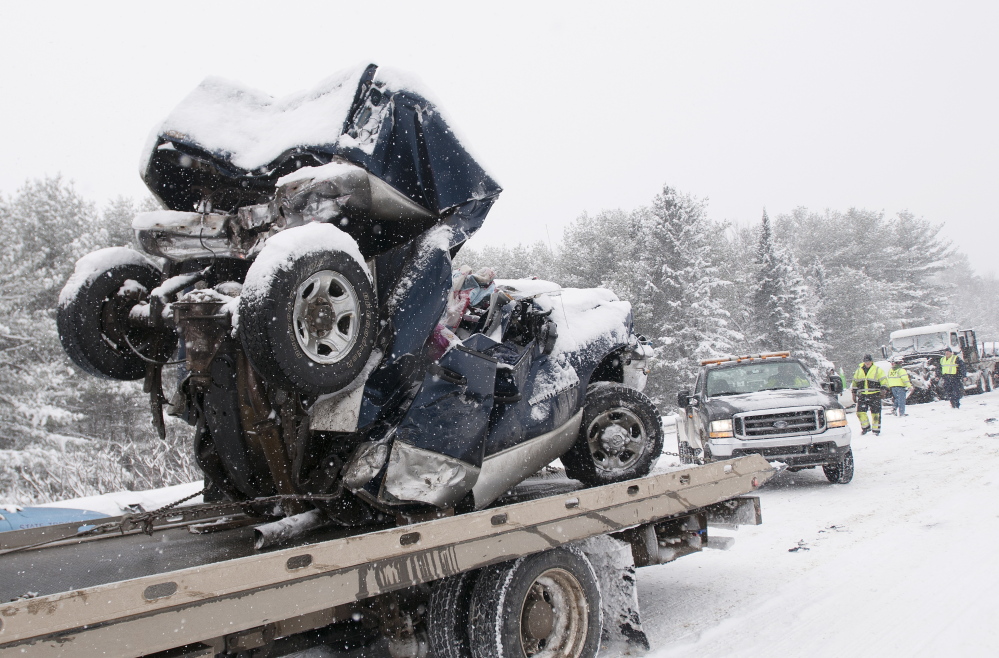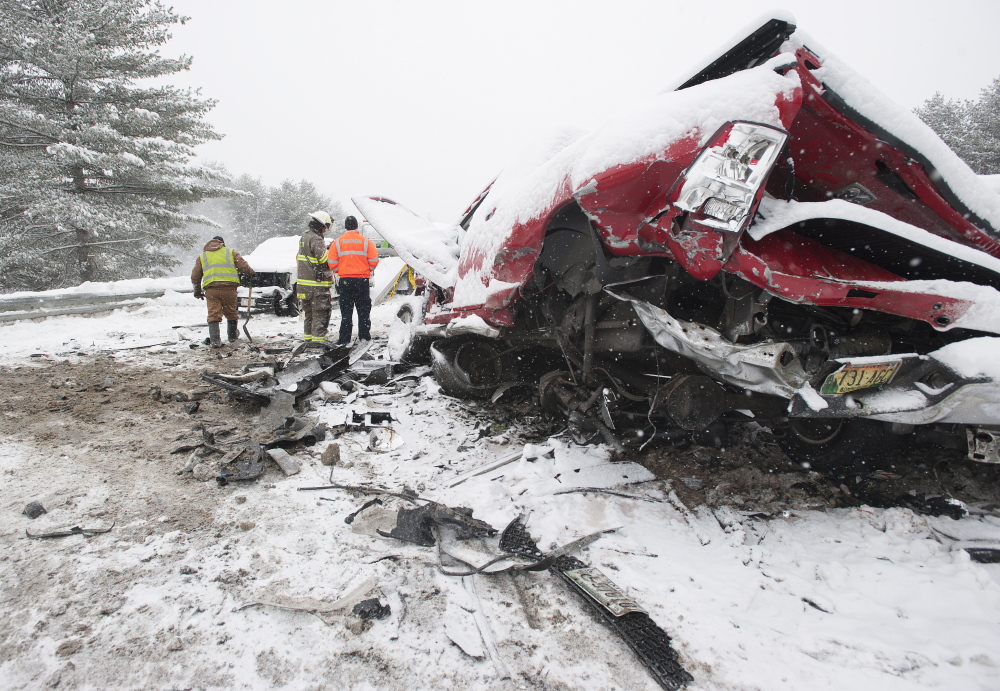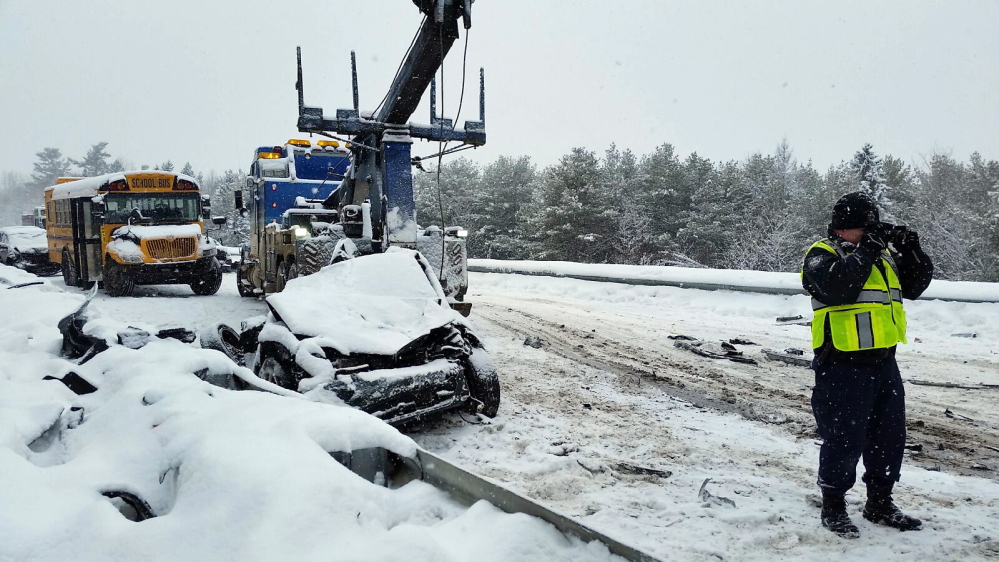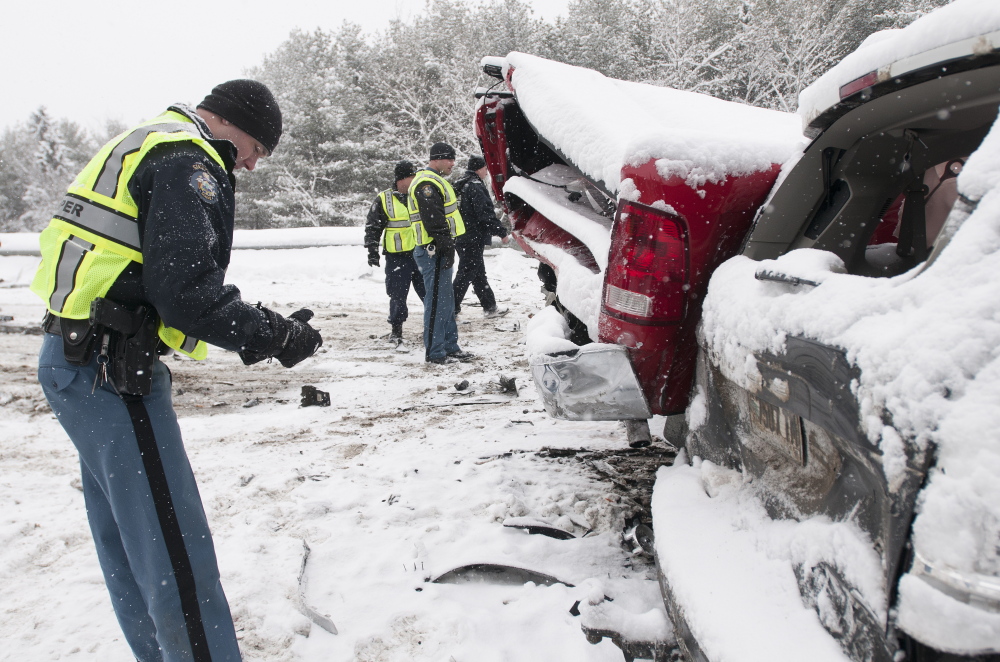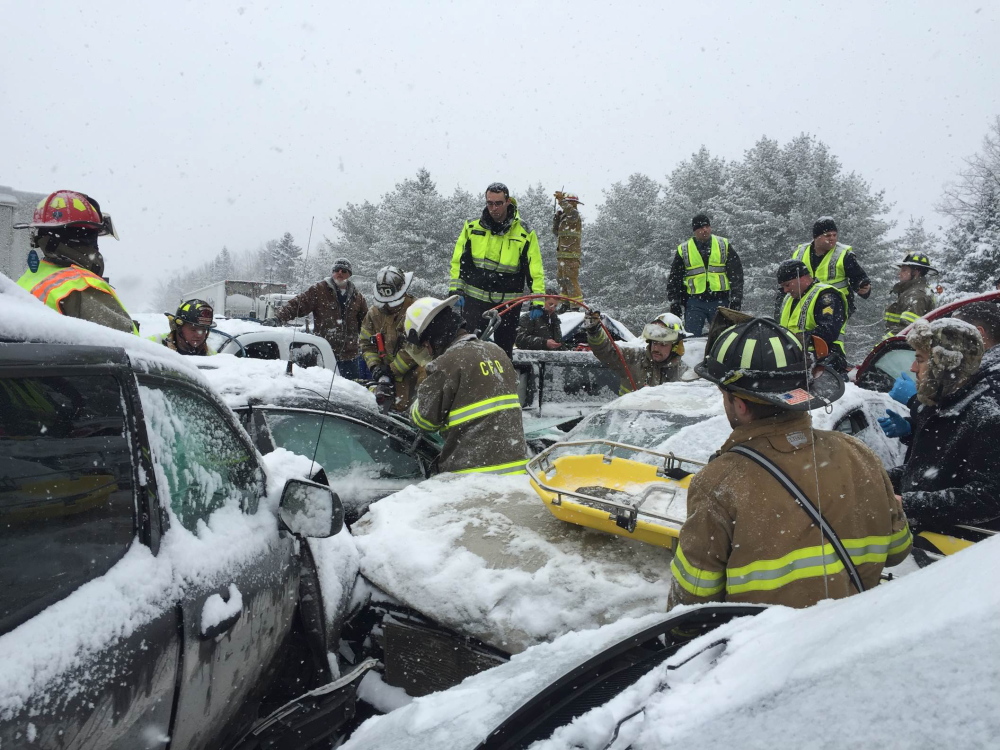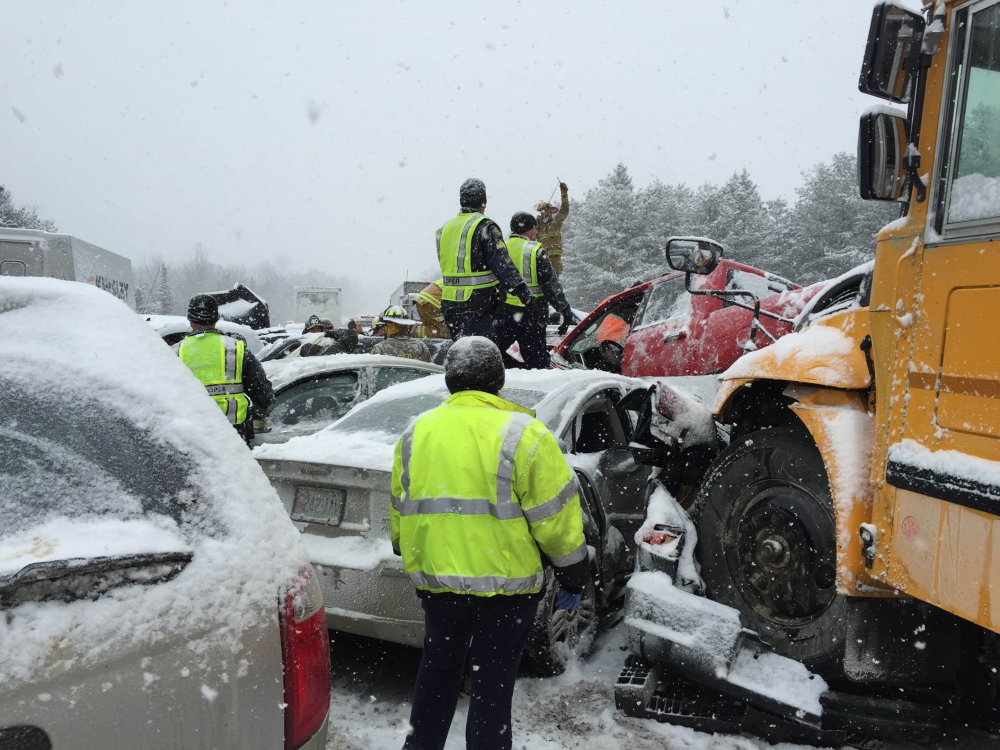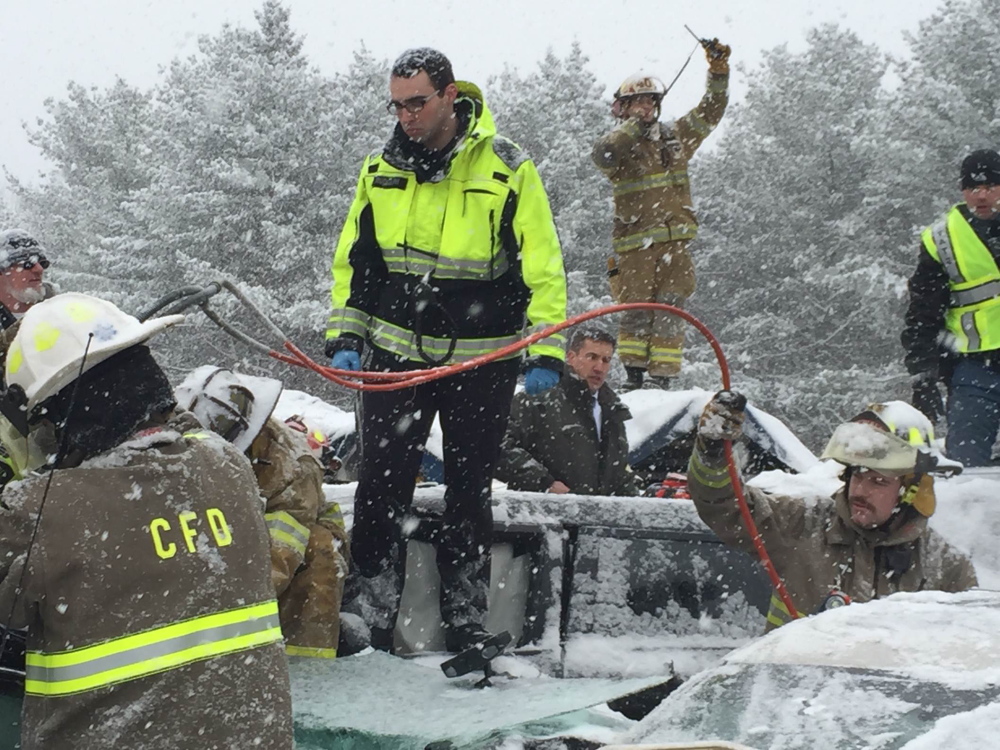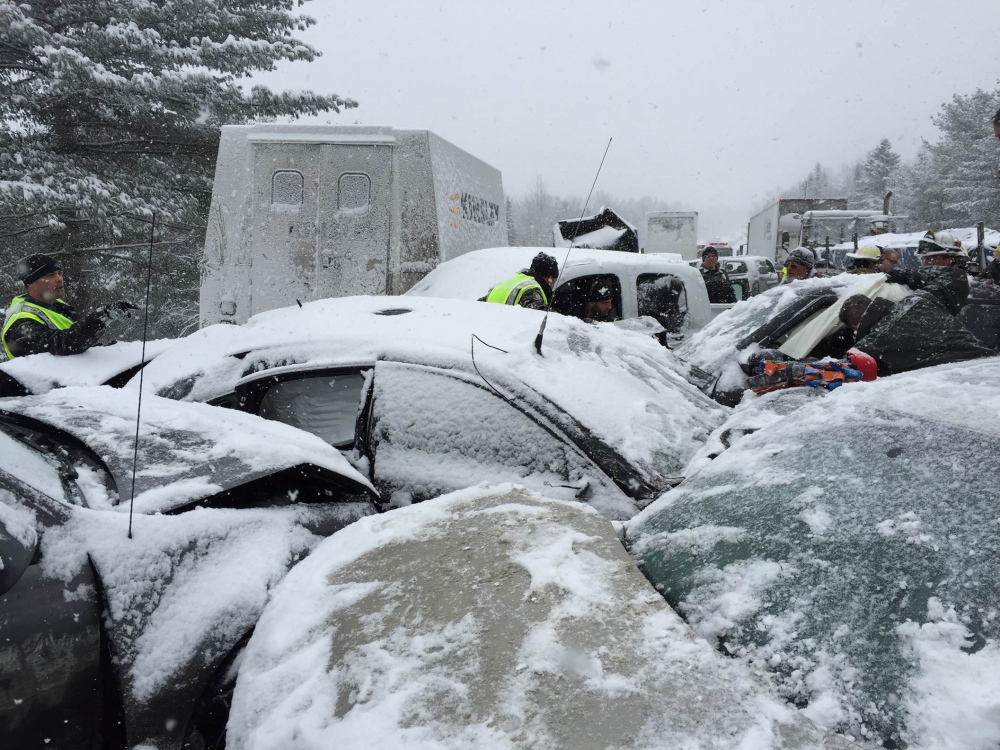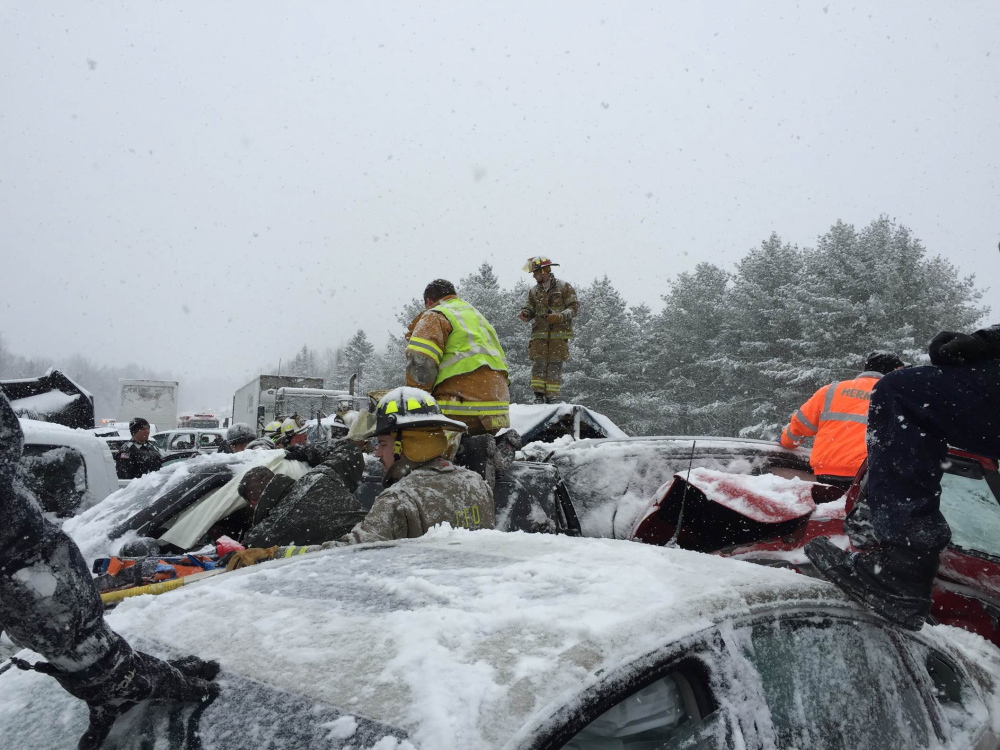A day after a series of crashes on Interstate 95 that involved 75 vehicles and injured 17 people, state officials said they’re continuing to investigate and are gathering data to analyze all of the contributing factors.
The chain-reaction pileup — believed to be the largest crash in state history — began just after 7:30 a.m. Wednesday and stretched from Carmel into Etna.
Maine State Police said Thursday that no charges have been filed in connection with the crashes.
“The troopers are now going through the paperwork as a result of a multitude of crashes,” Department of Public Safety spokesman Steve McCausland said in a press release Thursday. “They’re continuing to interview the motorists involved and are also looking at photos that they took on the scene to try to get a sequence of events that lead to the chain reaction.”
The state police investigation will examine the sequence of events to determine why so many cars ended up involved in the crash, which occurred amid heavy and wet snowfall that made for poor visibility.
McCausland said troopers are looking into reports that the pileup began when a single car went off the road and another motorist stopped to lend a hand.
“We have heard that, but have not confirmed that,” McCausland said.
Amanda Feero, a spokeswoman for Eastern Maine Medical Center in Bangor, said 14 patients were seen Wednesday by the emergency department, five of whom were admitted for treatment overnight. Two other patients were seen after arriving at the hospital under their own power. Nine patients were discharged, and the others are listed in good, fair and serious condition.
St. Joseph Hospital, also in Bangor, treated six crash victims. Amy Kenney, director of communications and business development at St. Joseph Healthcare, said six people were treated following the crashes Wednesday, one of whom was admitted overnight. Four were treated and released and one was transferred to EMMC.
Meanwhile, the Maine Department of Transportation is gathering data to evaluate the crash, said department spokesman Ted Talbot. Dozens of transportation workers will examine data related to the snowfall, vehicle speeds, ground and air temperatures and more, he said.
The department collects such data frequently during the winter anyway, Talbot said, and expects to have the information related to the pileup assembled by early next week.
“It’s where we try to piece together not only what happened, what the current conditions were, but is there something we can learn?” Talbot said.
Talbot said one clear factor is that stretch of the highway in Etna has historically had different weather patterns “that happen to move through there, where there haven’t been in other areas.”
“I think the condition of the road is fine. It’s what happens with the precipitation,” he said. “So, we’ll be looking at visibility and how heavy the snowfall was. We want to look at all the conditions, both atmospheric and ground level, and get all the facts and understand if we can do anything better.”
Police investigators will also look into whether driving habits have to change to prevent a similar accident. So far in February, there have been pileups during snowstorms involving 25 or more vehicles in New York state, Pennsylvania, Ohio, Massachusetts and Chicago. Last month, there was a 35-car pileup on Interstate 93 in New Hampshire during a snowstorm.
McCausland said the state police begin every winter season and every pending storm with a reminder to go slow on ice and snow. Wednesday’s events may represent an opportunity to drive the point home if the investigation determines that the accidents could have been reduced by slower traffic and more spacing between vehicles.
“If there is a teaching moment that comes out of this, we will make those facts known,” he said.
Doug Harlow — 612-2367
Twitter: @Doug_Harlow
Send questions/comments to the editors.


